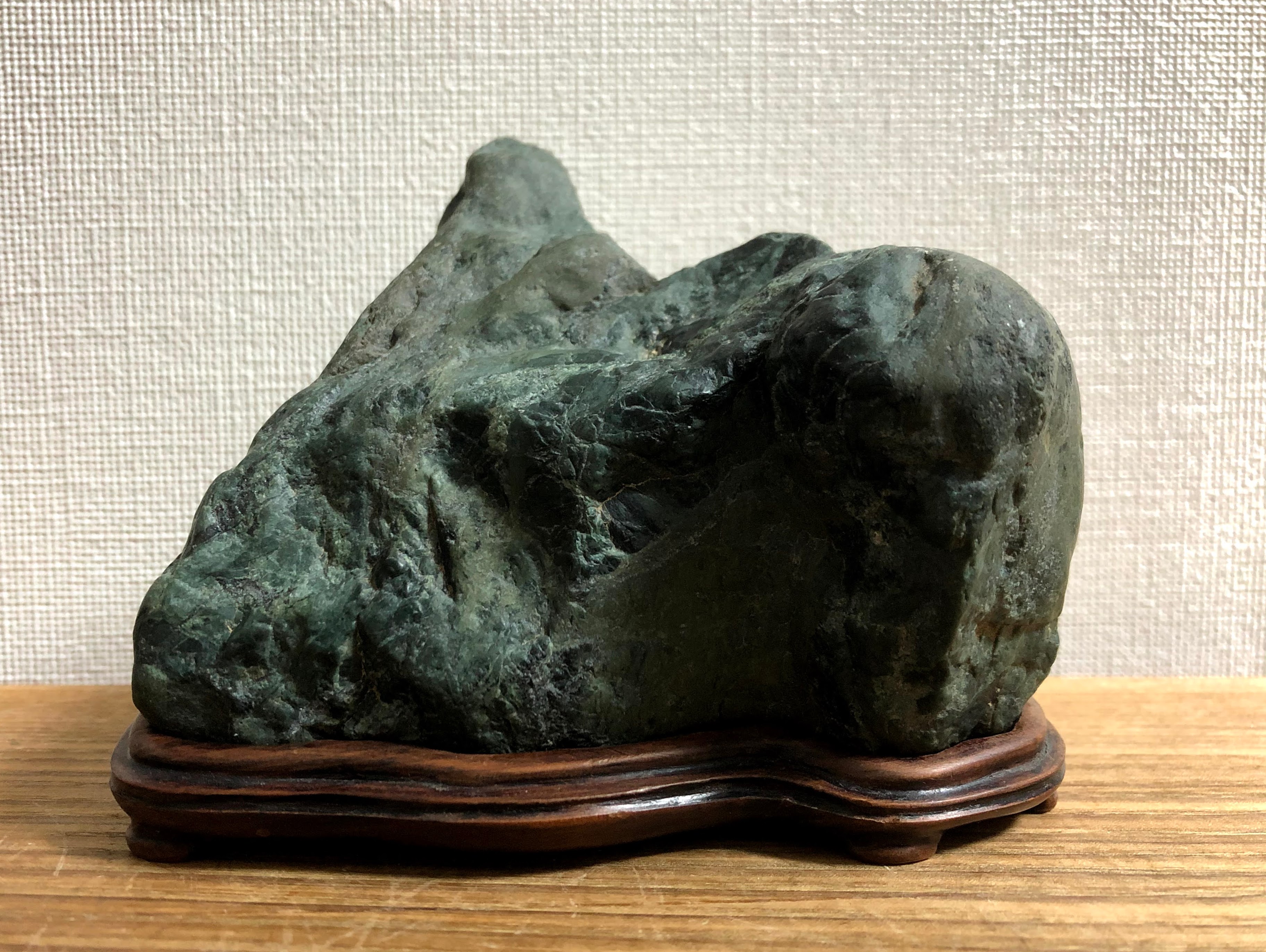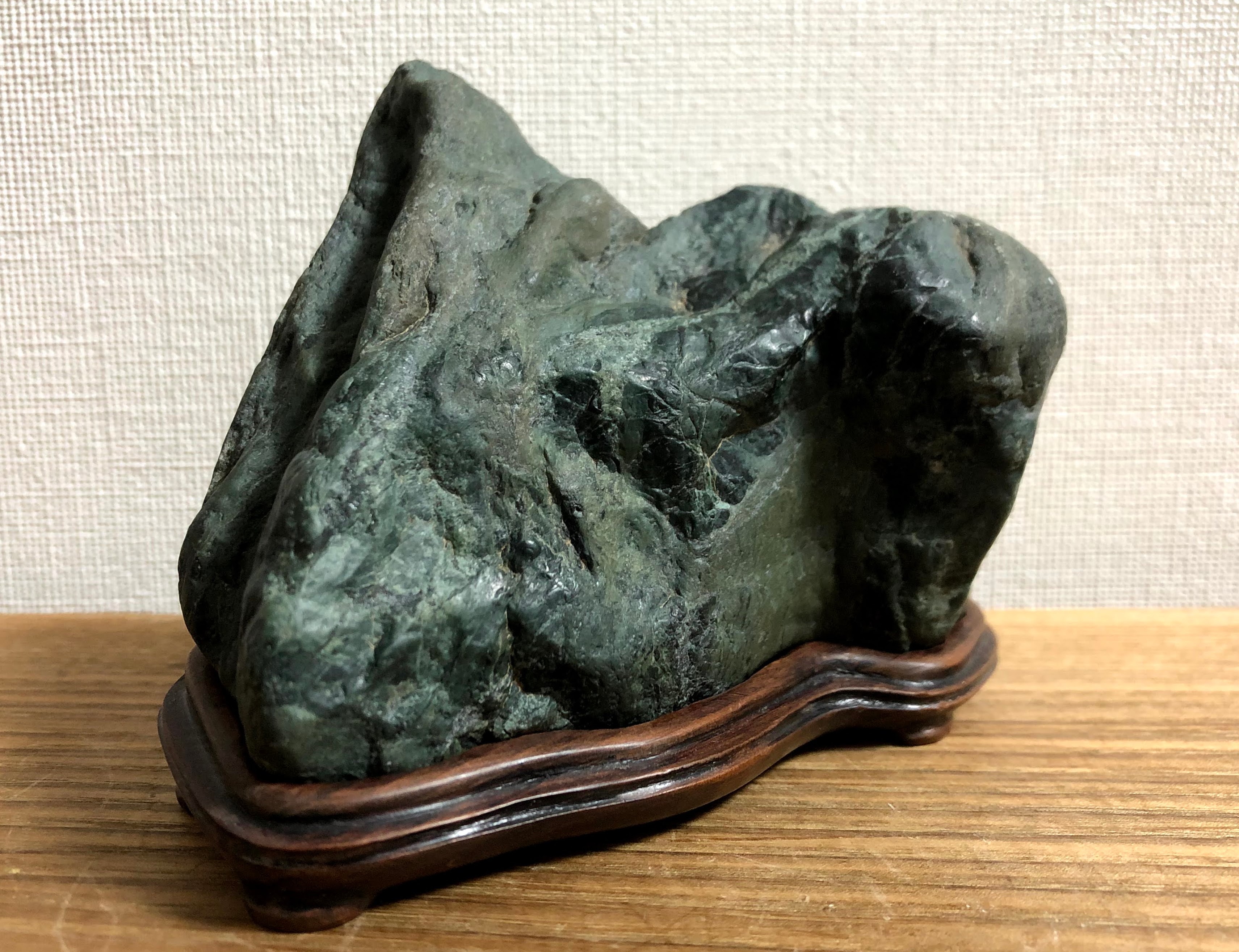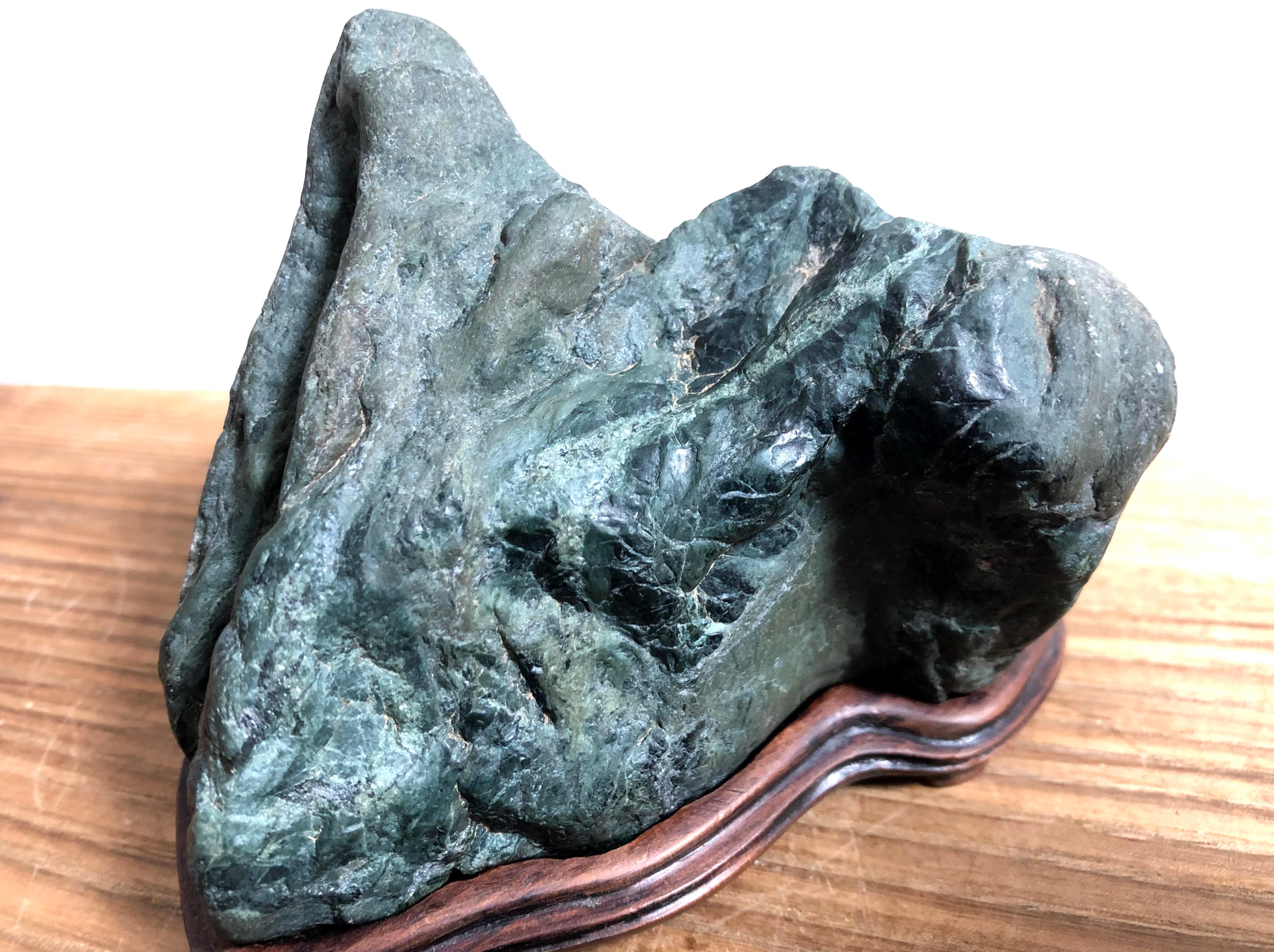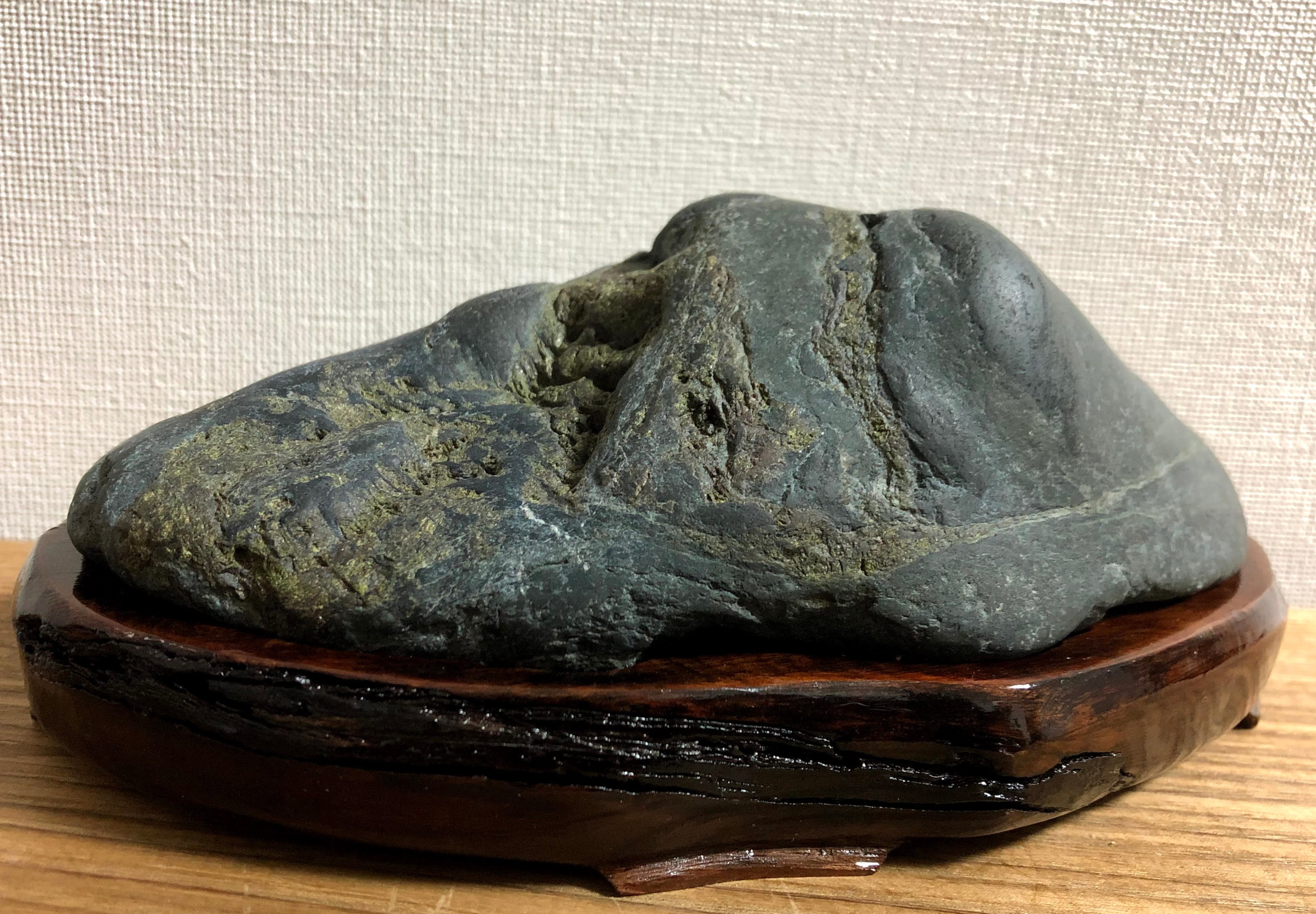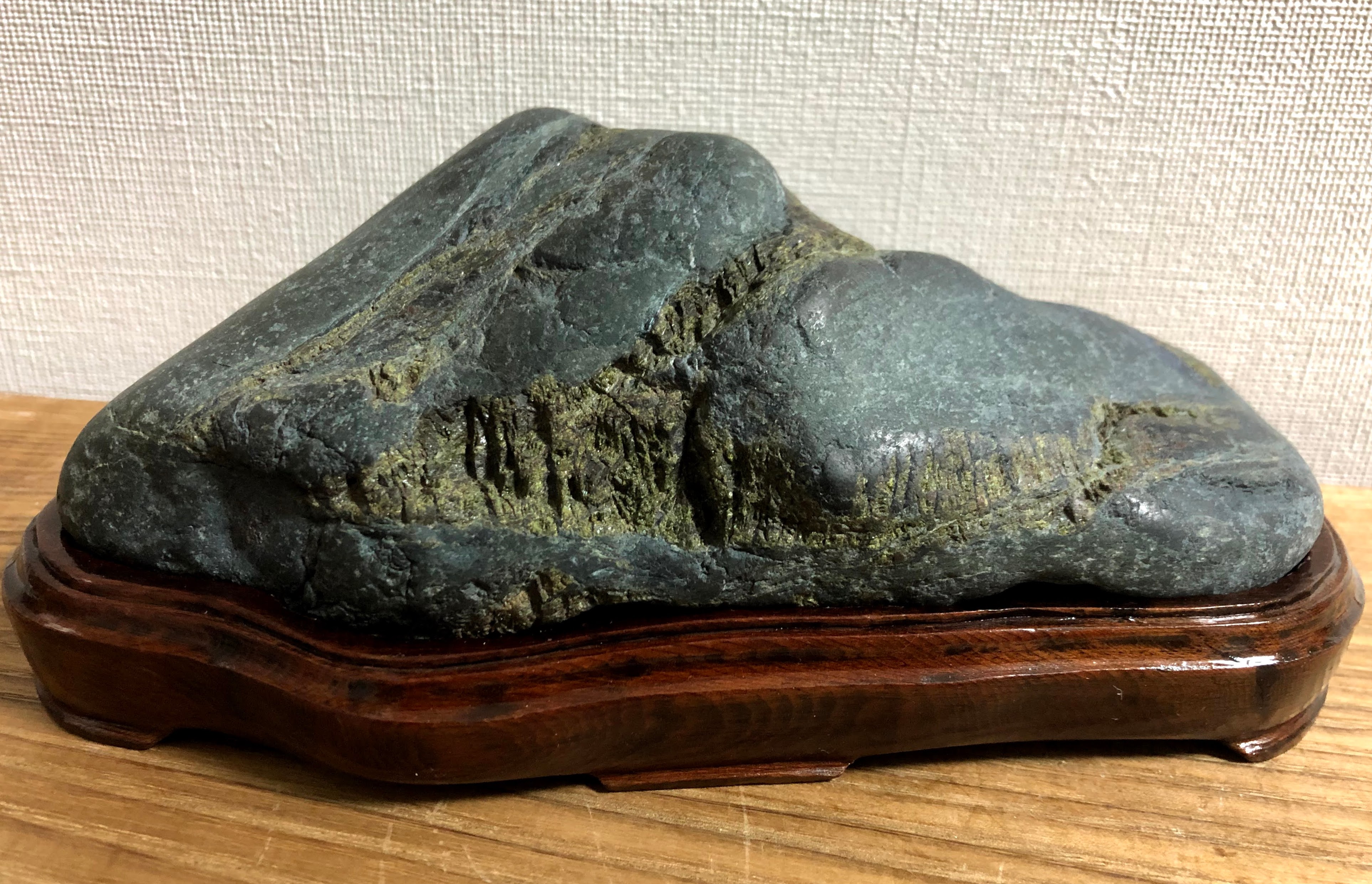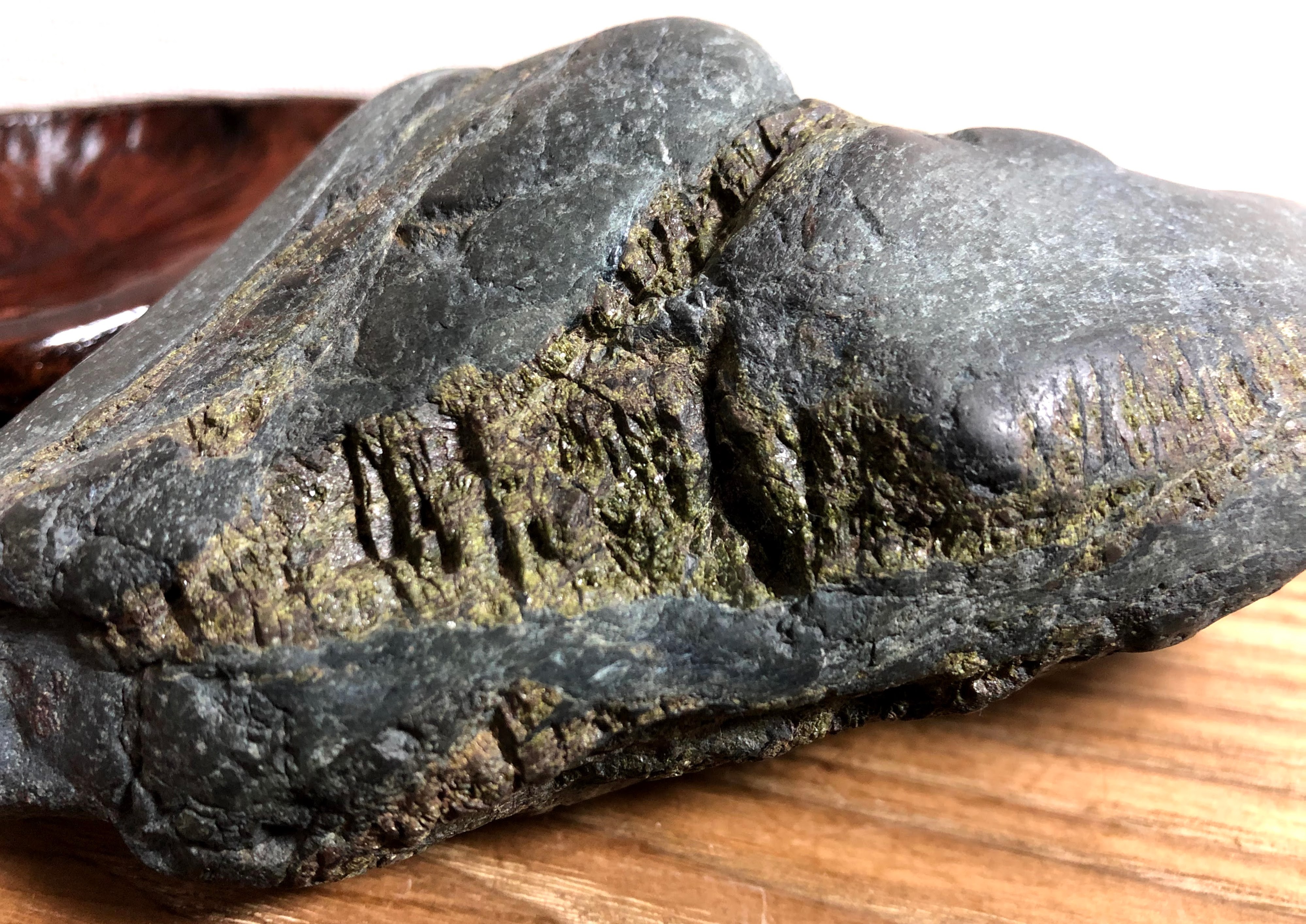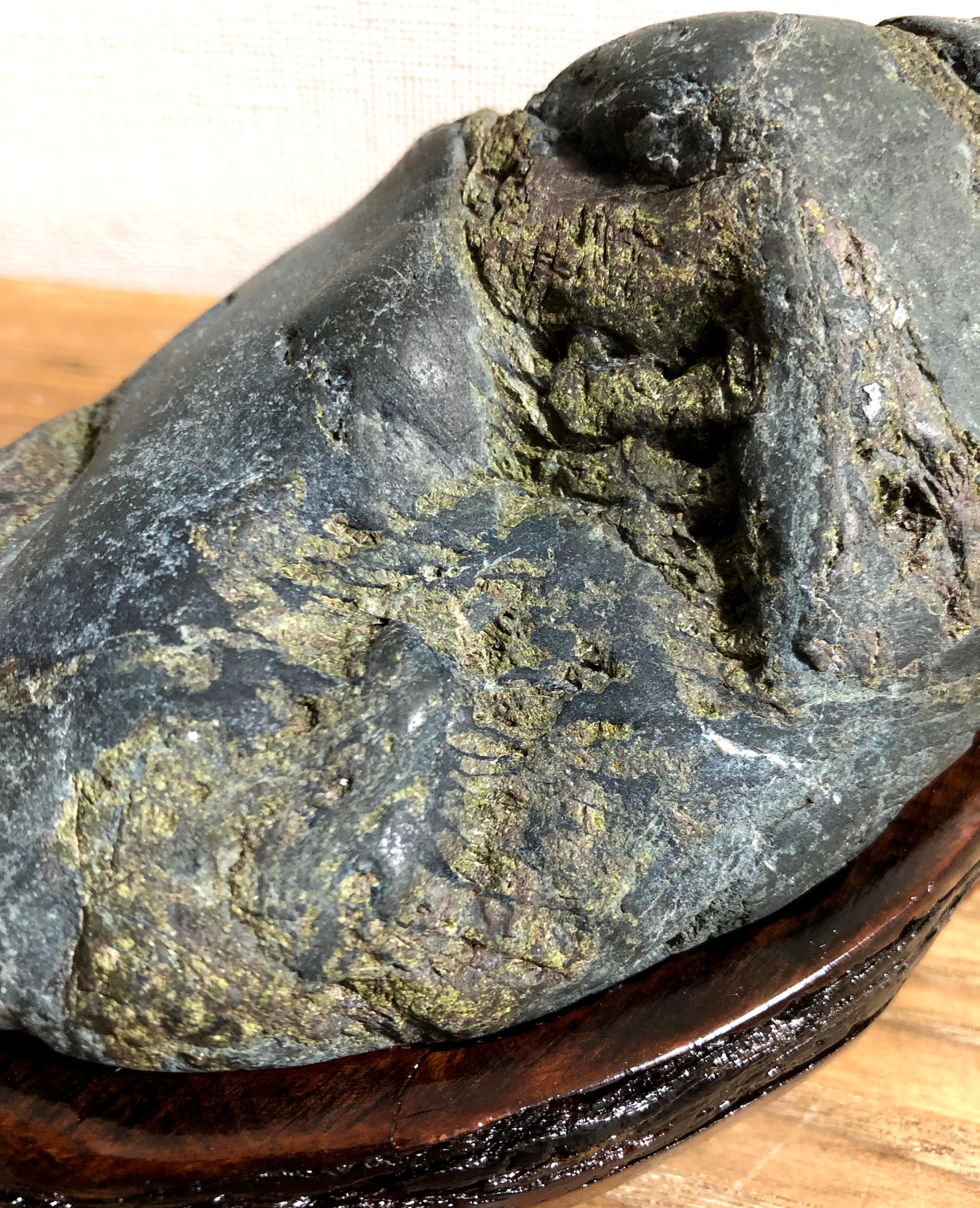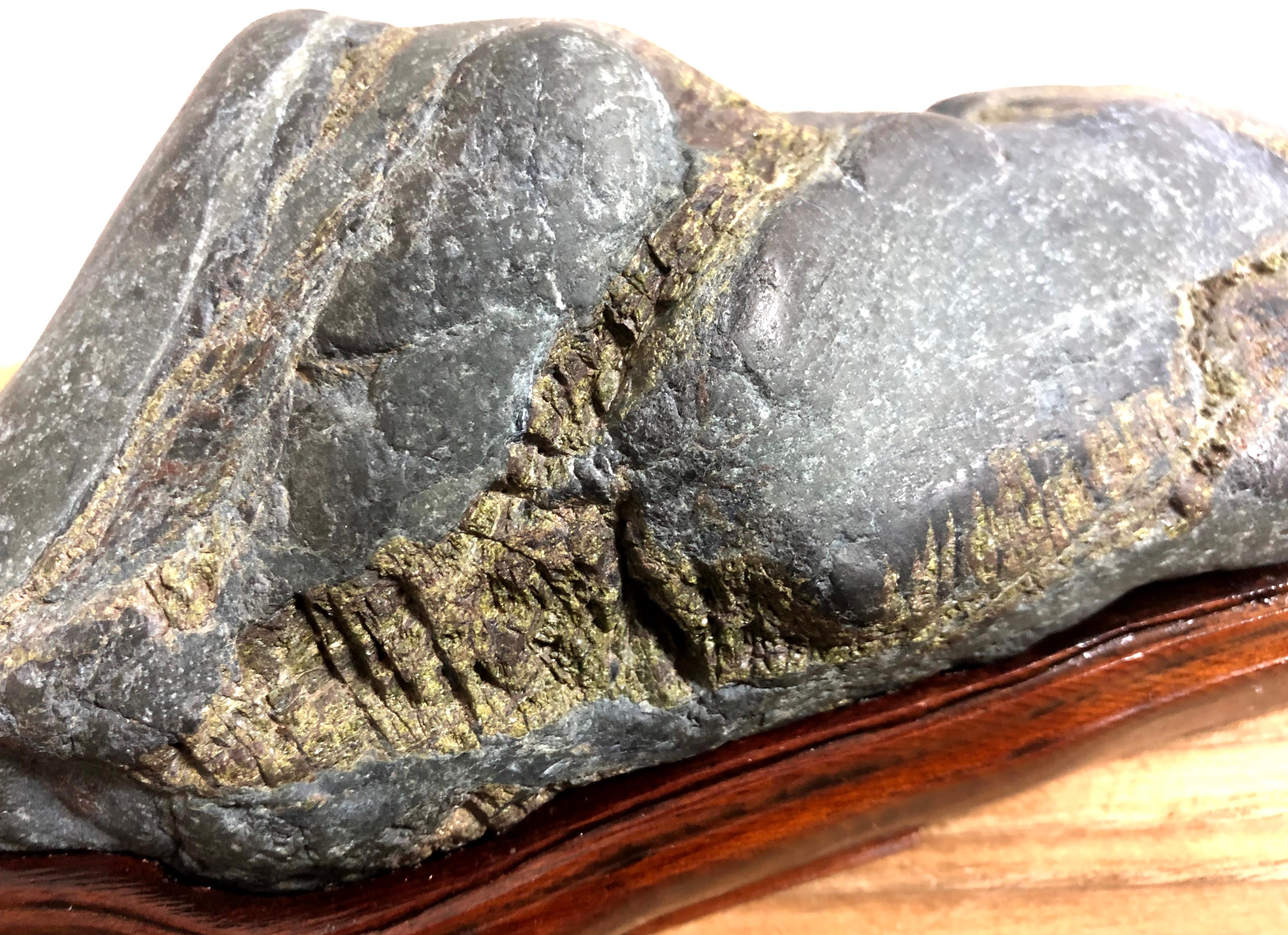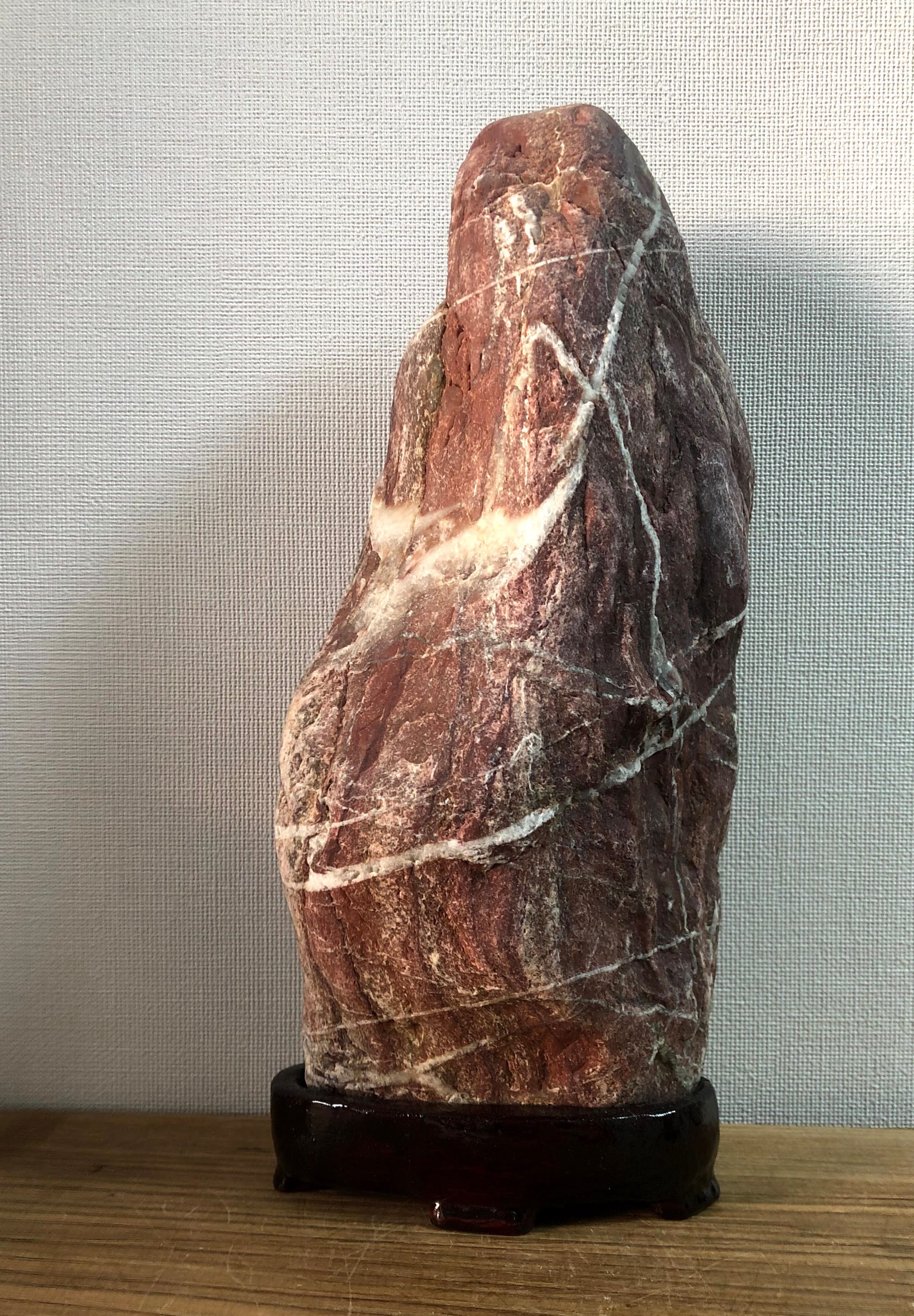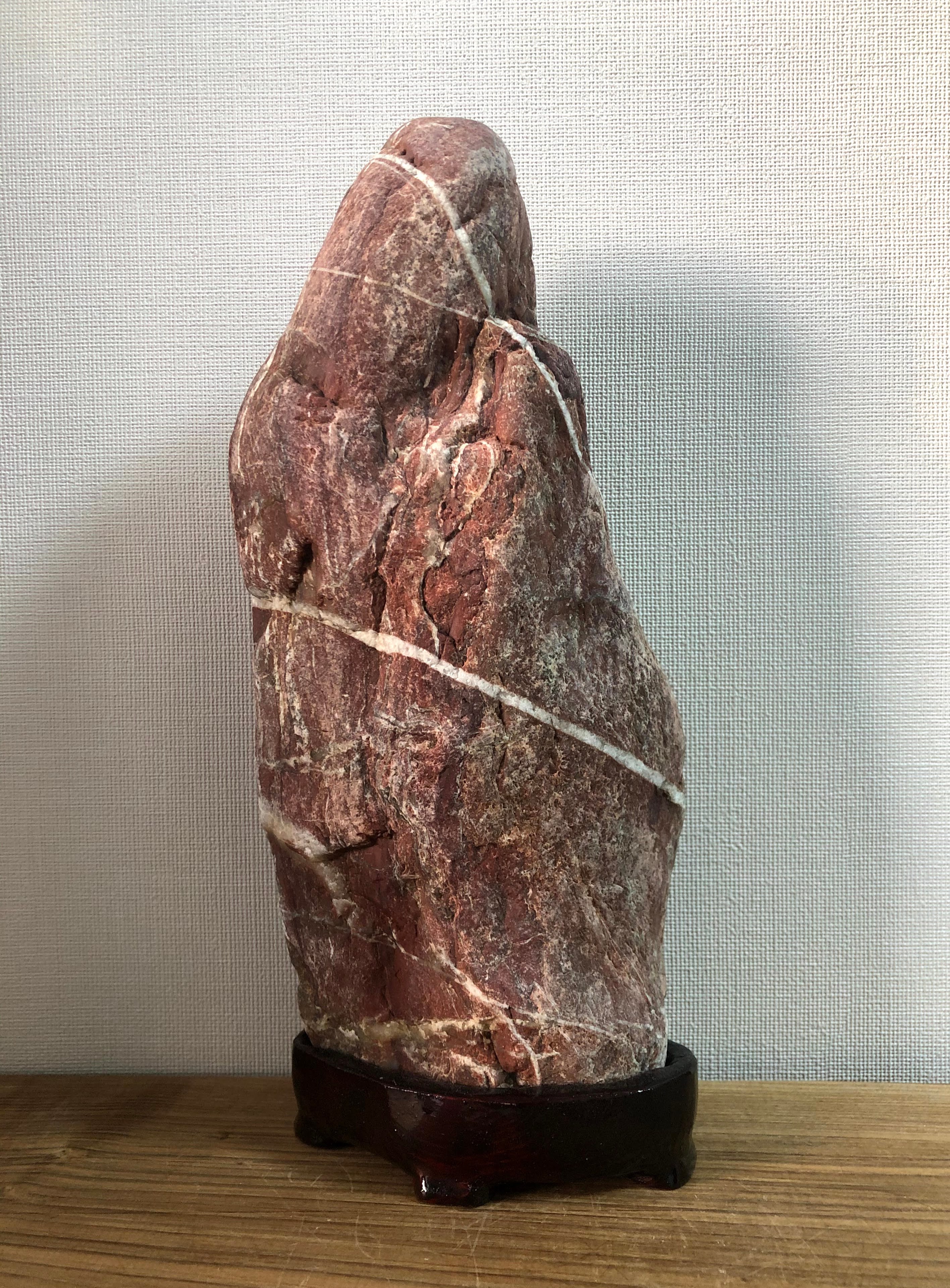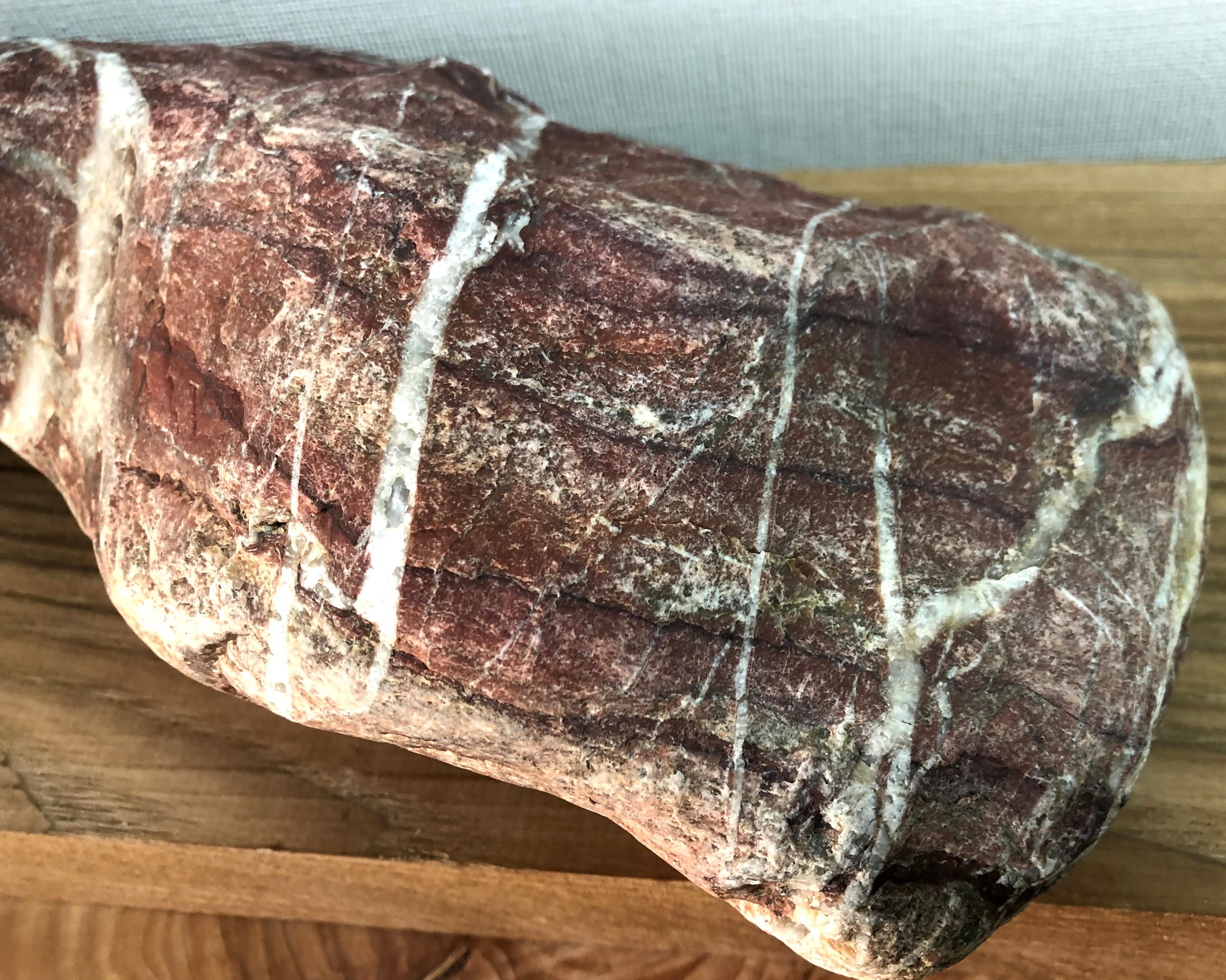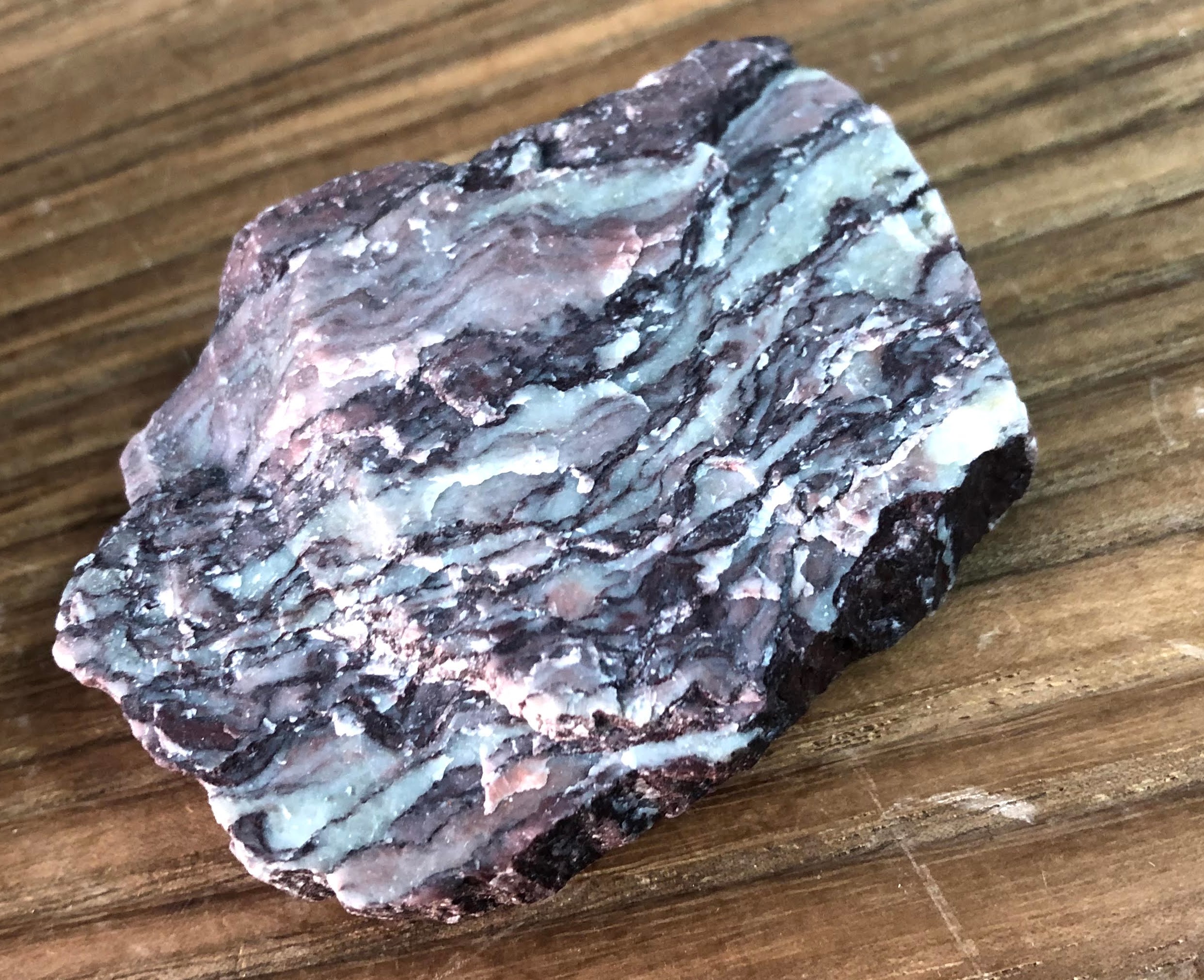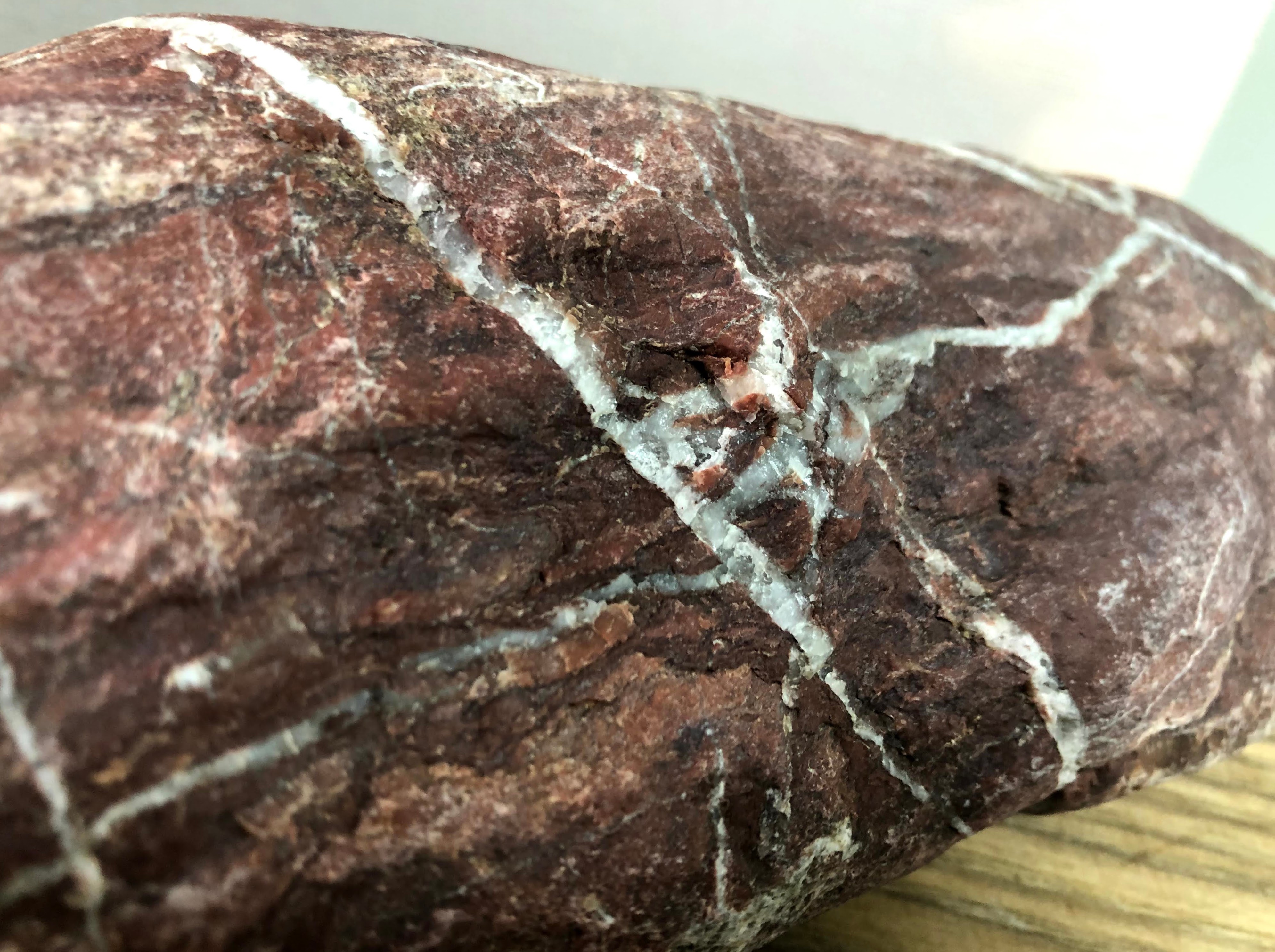KamuiCotan-seki-III, 神居古潭石
KamuiCotan-seki-III
This is already Kamui Cotan Seki-III. The reason why three pages were made is because I like Kamui Cotan Seki and could not stop to collect them.
The greatest feature of Kamui Cotan Seki is shiny, hard, dense, and smooth.
If touching every day, it becomes more smooth and shiny. That’s why Kamui Cotan Seki is called oily stone.
KamuiCotan-seki, Shiny green
This is Kamui Cotan Seki, Shiny green.
I did not know about Kamui Cotan Seki, Shiny green until I found this stone.
According to Kamui Suiseki An, who is collector of Kamui Cotan Seki, shiny green is the most beautiful, shiny, and smooth stone in Kamui Cotan Seki. Further, the shape of this stone is good for landscape.
Actually, the size of this stone is palm size but having a presence
By the way, small stones have a tendency to be monotonous, so small stone having complicated shape is rare.
Going back to the subject, Shiny green is mixed in Green mud in most cases. 100% shiny green in the one stone is very rare and it is called True shiny green.
By seeing from atoner angle, you may see shiny, dark green, shaped like a belt. It is Shiny green.
Even so, stone is steady but it is very difficult to take a photo as it looks like from eyes.
KamuiCotan-seki - Unclassified
This is KamuiCotan-seki, unclassified. The meaning of the unclassified is because this stone is not categorized in Kamui Cotan Seven or Ten stones.
By the way, as Sajigawa Ishi Seven or Ten stones, xxx Seven or Ten stones are eulogistic names and also an expression honoring area having a wide variety of Suiseki stones.
Actually, what is seven or ten is quite unclear. Anyway, areas having a wide variety of Suiseki stones are usually metamorphic belt and there are several peculiar stones.
Going back to the original story, this is Kamui Cotan Seki, but it is quite unique. The first unique feature is its color. Half portion is greenish and the other is blue-black.
Then, rough surface areas. They are not Jagure but quite rough and glitter green. It seems to be Epidote.
From this, it seems to be not Suiseki but Mineral sample. Nevertheless, the shape is distant mountain, so I believe this stone is Suiseki.Of course, due to the rough areas, the line of a mountain ridge is not smooth, however, its imperfection is more like natural mountain and so, this is good landscape stone, Suiseki.
Red KamuiCotan-seki
Although I thought Red KamuiCotan-seki is either chert or jasper, realized there is another.
I realized it by an encounter with the following Red KamuiCotan-seki.
It is quartz schist. It is a medium-grade metamorphic rock formed from red chert. Sheetlike orientation called schistosity can be seen.
According to Kamui Suiseki An, who is collector of Kamui Cotan Seki more than 35 years, Red Kamui Cotan Seki is the least number in Kamui Cotan seven or ten stones. There are two types of Red Kamui Cotan Seki. One is dark red with brown mixed, the other is light red with white mixed.
This Red Kamui Cotan Seki is light red with white mixed type.
This Red Kamui Cotan Seki has good shape and considered as Sugata-ishi. Further, white silica lines are considered as Monyo-seki.
If you look see at close range, parallel lines, schistosity, can be obsereved.
The following stone is a sample of quartz schist from Kamui Cotan:
The sample and the Red Kamui Cotan Seki are both quartz schist from Kamui Cotan, so both stones are mineralogically identical.
However, the sample has rough surface although Red Kamui Cotan has smooth surface by river wear. By the wear, the surface is changed to mellow. It is very good for Suiseki. It makes me feel good by seeing and touching.


